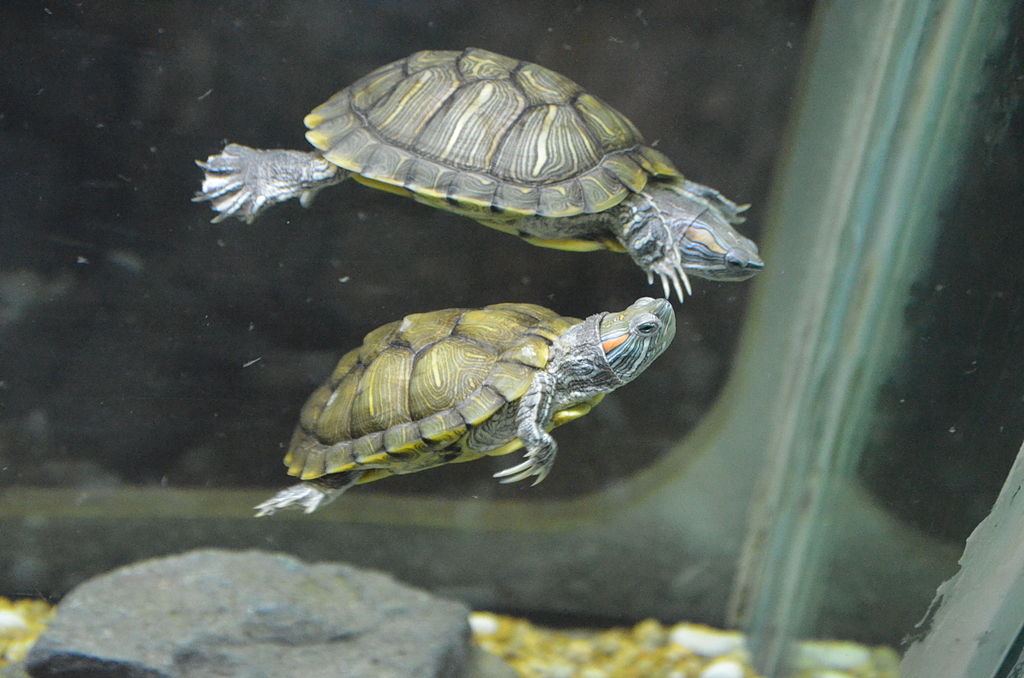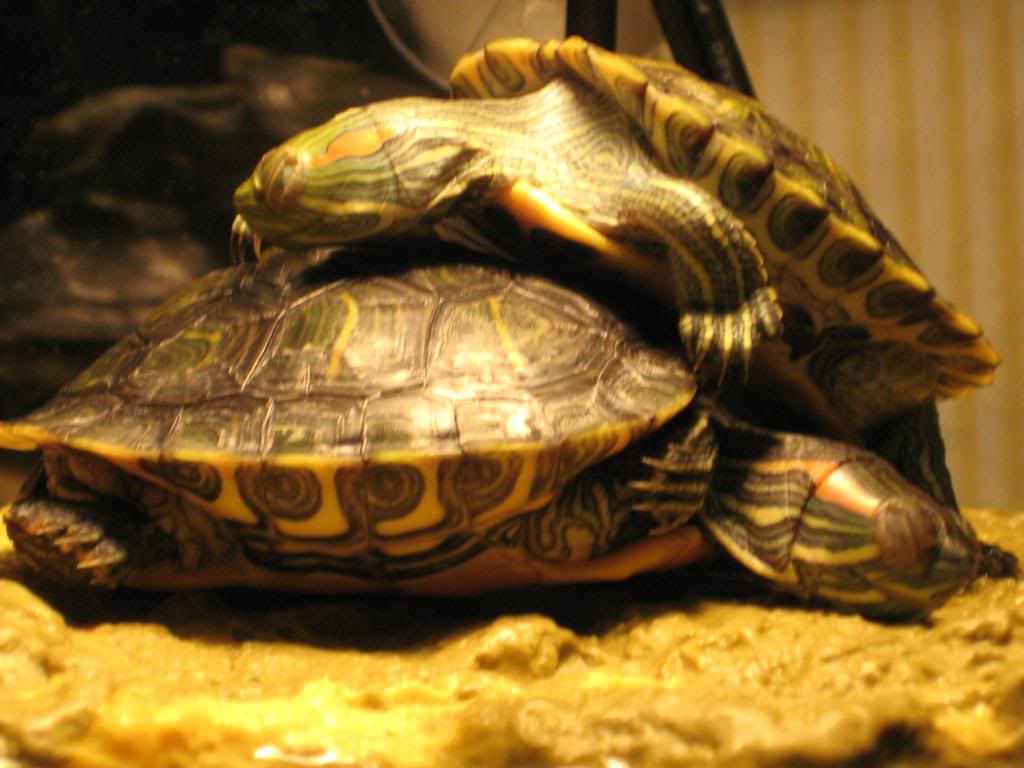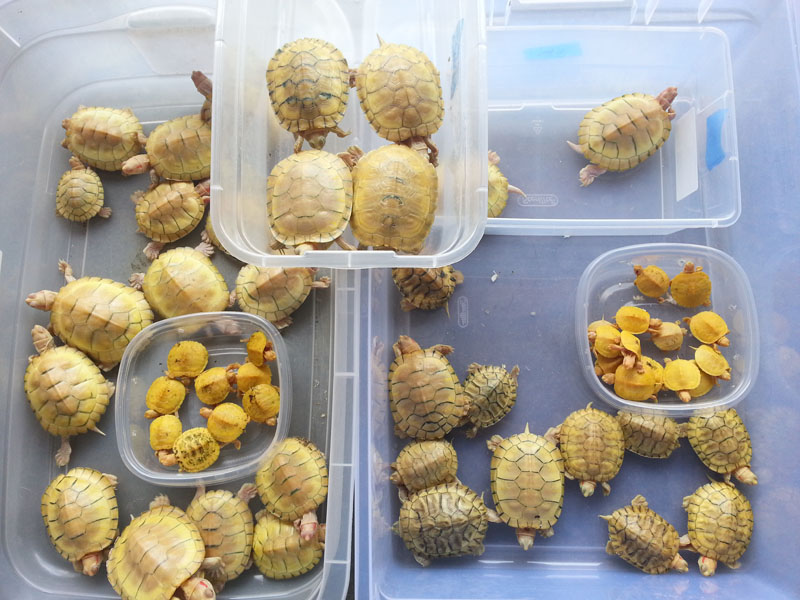BUYING - TIPS
Tips
When you buy a turtle, there are a lot of things to look out for. Where are you buying your turtle from? Where does the animal come from? Observe the body and behaviour of the turtle you’d like to buy and find out more about the whereabouts, knowledge and intentions of the seller, all while considering which kind of turtle would be best for you.
Pet shop or breeder?
Once you’ve decided to buy a turtle, the pet shop seems to be the most obvious option. However, some people breed turtles. Buying an animal from a breeder has some advantages. A breeder will normally be able to give you a lot of information and you’ll also be able to see the parents of your turtle. The old adage that “the apple doesn’t fall far from the tree” applies to turtles too! There is, of course, a third option: you can adopt a homeless turtle. Because turtles require an increasing amount of space, some owners end up unable to take care of their pets. These animals deserve a second chance and you might be able to offer them one. If you do decide to adopt a turtle, follow these tips to ensure that you’re adopting a healthy turtle.
Where does the turtle come from?
In the wild, turtles mainly live in tropical countries so you won’t find completely native turtles. Nevertheless, it’s better to choose an animal which has been bred in your country, rather than being imported. This is because turtles which have been bred here have endured less stress and are therefore healthier.
Mind the turtle
Watch the turtle for a while and observe it. Count its legs and eyes. Of course, there’s nothing wrong with welcoming a disabled animal to your home – these animals are not ill, are not contagious and deserve to enjoy life, but it’s always good to know what you will be dealing with in advance. A turtle with a deviating shell may be ill. Make sure that the shell is firm; a soft shell can indicate rickets. Check the turtle’s behaviour too. Does the turtle swim in a crooked way? Does the animal look lifeless? Are its eyes closed? If so, be wary: something may not be right. Air bubbles on the nose of a turtle are not a good sign: they may indicate pneumonia.
A turtle’s habitat reveals plenty of information
Although you should observe the turtle, keep an eye on the bigger picture. Is the animal well cared for and living in a clean, heated environment? Is there an area of land in the tank? Is there a spot where the turtle can sunbathe? If so, the chances of your turtle becoming ill are much smaller.
Vendor or animal lover?
Talk to the vendor and ask questions! Does he/she give good advice or does he/she just seem to be interested in selling? Turtles which have been poorly cared for are very susceptible to disease, so it’s important to find out whether your turtle has previously been well cared for.
Type of turtle
When talking to the vendor, you should ask which kind of turtle you’re taking home with you. Different species vary in terms of their diet, gender and behavioural characteristics; for example, they may have a different favourite temperature. In addition, depending on your country it’s possible that for certain species you will need papers to prove where you’ve it. However, most species can be taken home without any difficulties.


